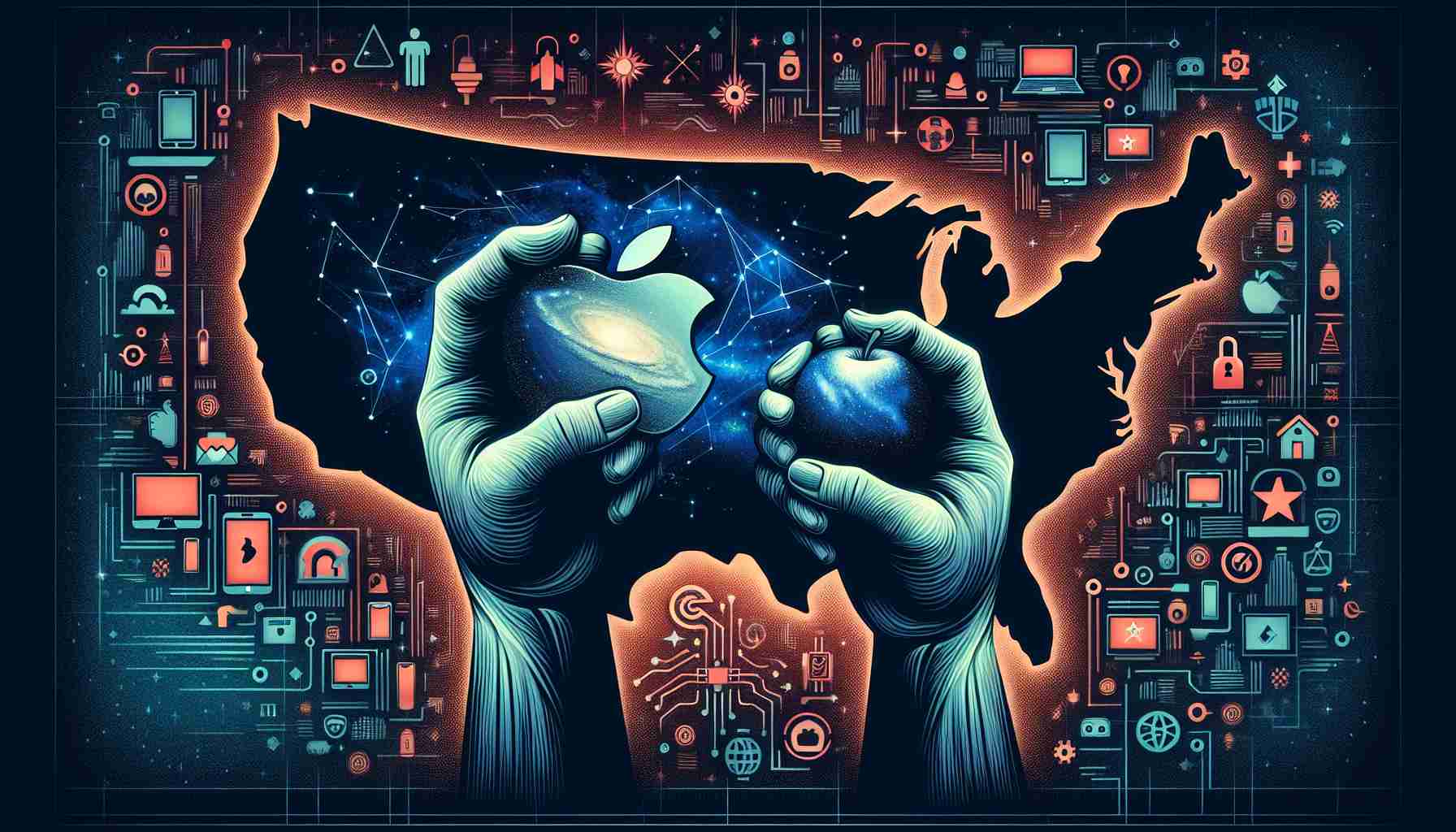Apple Leads the US Market with Strong Customer Base
Apple’s stronghold in the American smartphone market remains unshaken, commanding a remarkable 52% share despite an 8% dip in overall market shipments. This illustrates the tech giant’s compelling attraction and the steadfast allegiance of its consumers.
Samsung’s Remarkable Comeback
Trailing but with notable momentum, Samsung triumphs with its S24 Galaxy series, seizing a 31% stake in the market. Their impressive performance in the first quarter suggests a shift towards heightened competitiveness in the Android space, where affordability often guides consumer choice.
Innovation and Ecosystems Fuel Brand Devotion
The unwavering devotion to brands like Apple and Samsung stems from their commitment to rich ecosystems and cutting-edge innovation. Apple’s latest iPhone 14 series showcases how these advances consolidate their standing in the marketplace.
Strategic Moves in Sustainable Tech
As the world recovers from the pandemic, these tech giants are amplifying their eco-friendly policies and embracing next-gen technologies like 5G, setting new benchmarks for the sector. Experts from Counterpoint Research and IDC keep a watchful eye on these strategic maneuvers that are defining the industry’s trajectory.
Apple’s Unique Selling Proposition
What gives Apple an advantage over others is its integrated infrastructure that harmonizes hardware and software, hence delivering an unparalleled user experience. This reinforces customer loyalty even when faced with market saturation and economic uncertainties.
Challenges Posed by Market Consolidation
The preeminence of a few key players such as Apple and Samsung introduces its own set of challenges, including regulatory oversight and the risk of decelerated innovation. Consumers and industry analysts look to authoritative sources for comprehensive evaluations, acknowledging the importance of both current and precise data.
Questions at the Forefront
Questions arise on how Apple sustains its dominant US market position and how Samsung has successfully reestablished itself with a significant market share. Both companies navigate through a maze of challenges, from market saturation to balancing innovation with eco-consciousness, while keeping an eye on regulatory implications.
Debates on Environmental and Innovation Impacts
The sustainability of tech products and their environmental footprint continue to spur debate. Apple and Samsung navigate these waters with eco-initiatives but still face scrutiny over the sustainability of their electronics, with critics voicing concerns about innovation potentially being stifled by market concentration.
Competition and Partnerships
While Apple and Samsung dominate the US tech industry, their rivalry also extends to being major components suppliers to each other. Samsung has historically supplied Apple with various components, such as screens and memory chips for iPhones. This complex relationship exemplifies the interconnectedness of the global tech industry, where competitors can also be essential business partners.
Challenges with High Consumer Expectations
One key challenge for both Apple and Samsung is continuously meeting high consumer expectations for innovation and quality. While their brand loyalty is a testament to their past successes, it also sets the bar high for future products. This pressure can make it challenging to sustain innovation, especially as technology advancements become more incremental.
The Role of Marketing in Brand Success
Marketing strategies have played a significant role in establishing the brands. Apple, in particular, is known for its sleek, minimalist advertising and its product launch events that generate hype and media coverage. Samsung’s marketing efforts have often been directly competitive, such as ads that poke fun at Apple products or highlight features not available on iPhones.
Advantages and Disadvantages
Advantages of the strong positions of Apple and Samsung include their ability to invest heavily in R&D, leading to the development of innovative features and products. They can also leverage their market dominance to negotiate better terms with suppliers and distributors.
However, disadvantages include the intensified scrutiny from regulators concerning anti-competitive practices and market dominance. Moreover, their positions can stifle smaller competitors, potentially limiting consumer choices and hindering diversity within the tech ecosystem.
International Dynamics
The US tech industry does not exist in a vacuum, and global politics, such as trade disputes and tariffs, can significantly impact both companies. For example, tensions between the US and China, where much of Apple’s manufacturing operations are based, could affect the supply chain and product pricing.
Legal Battles
Both Apple and Samsung have been involved in numerous legal battles over patent infringements and intellectual property rights, which reflect the high-stakes nature of remaining at the technology frontier.
Suggested Related Links:
– Apple
– Samsung
– Counterpoint Research
– IDC (International Data Corporation)
These links provide access to the companies’ official pages and research institutes that monitor industry trends, respectively.
